Ahoy, fellow survivor! If you’ve ever set foot (or fin) in the vast oceans of ARK: Survival Evolved and its water dinos, you know that it’s not just about dodging the jaws of a Megalodon or riding the waves atop a majestic Mosa. The aquatic world of ARK is teeming with wonders, dangers, and—let’s face it—a few moments that’ll make you go, “Oops, I didn’t mean to do that”!
But fear not! This guide is here to help you navigate the deep blue, understand the importance of our finned friends, and maybe share a chuckle or two. Ready to dive in? Let’s make a splash!
The World of ARK’s Aquatic Life
The oceans of ARK are filled with treasures, dangers, and, most importantly, a variety of marine dinosaurs, each with its unique characteristics and abilities. From the swift and friendly Ichthyosaurus to the colossal and fearsome Mosasaurus, the aquatic world of ARK promises endless excitement and discovery.

ARK’s oceans are not your average backyard pond. They’re vast, mysterious, and filled with creatures that range from “Aww, so cute!” to “Oh no, I forgot my extra pair of underwater pants!” Let’s take a deep dive into the evolution of these ARK water dinos:
Evolution in the Digital Depths
Just like the game itself, the aquatic life in ARK has evolved over time. From the initial introduction of basic creatures like the Coelacanth to the majestic and terrifying Tusoteuthis, the game developers have ensured that players have a wide variety of marine life to interact with. And let’s not forget the occasional underwater unicorn (okay, maybe that’s just a rumor… or is it?).
Significance of Aquatic Biomes
The oceans and waterways in ARK aren’t just there for decoration. They play a crucial role in the game’s ecosystem. Rich in resources, these biomes offer players the chance to harvest unique materials, discover hidden caves, and, of course, tame some of the most powerful creatures in the game. Plus, there’s nothing quite like the feeling of discovering a sunken shipwreck filled with loot!
Top 5 Must-Have ARK Water Dinos
Alright, let’s get to the meat (or should I say fish?) of the matter. Here are the top 5 water dinos that every survivor should consider adding to their aquatic arsenal:
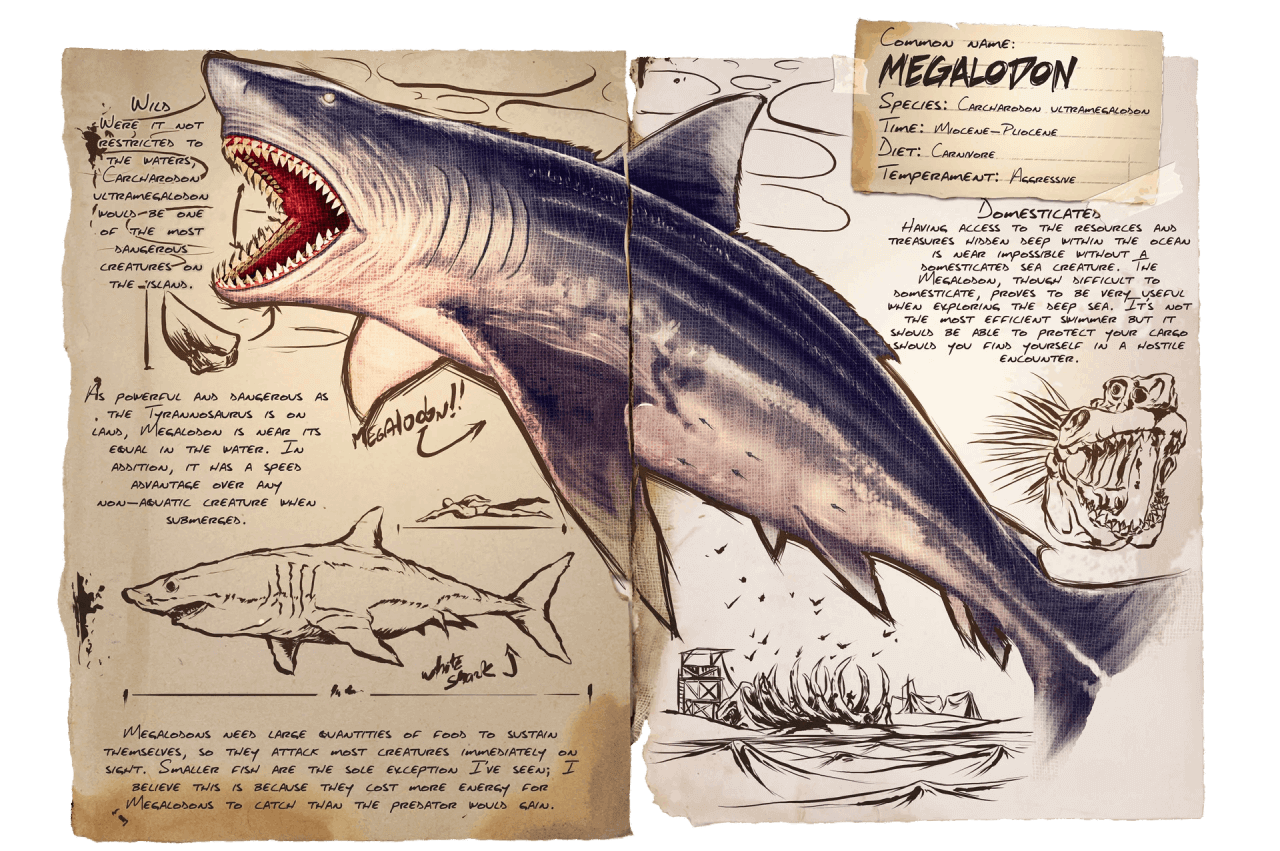
Megalodon: The Ocean Predator
Often dubbed the ‘T-Rex of the Seas’, the Megalodon is a massive shark that dominates ARK’s oceans. With its razor-sharp teeth and powerful jaws, it’s a force to be reckoned with. But, for those brave enough to tame this beast, the Megalodon offers swift navigation through the waters and unmatched hunting prowess. Its keen sense of smell allows it to detect injured prey from a distance, making it an invaluable asset for deep-sea hunting expeditions.
| Megalodon’s Strengths | Megalodon’s Weaknesses |
|---|---|
| Powerful jaws capable of delivering devastating bites | Can be overwhelmed by groups of smaller, agile creatures |
| Excellent swimmer with good speed | Limited stamina for prolonged chases |
| Keen sense of smell for detecting injured prey | Vulnerable to attacks from larger sea creatures like the Mosasaurus |
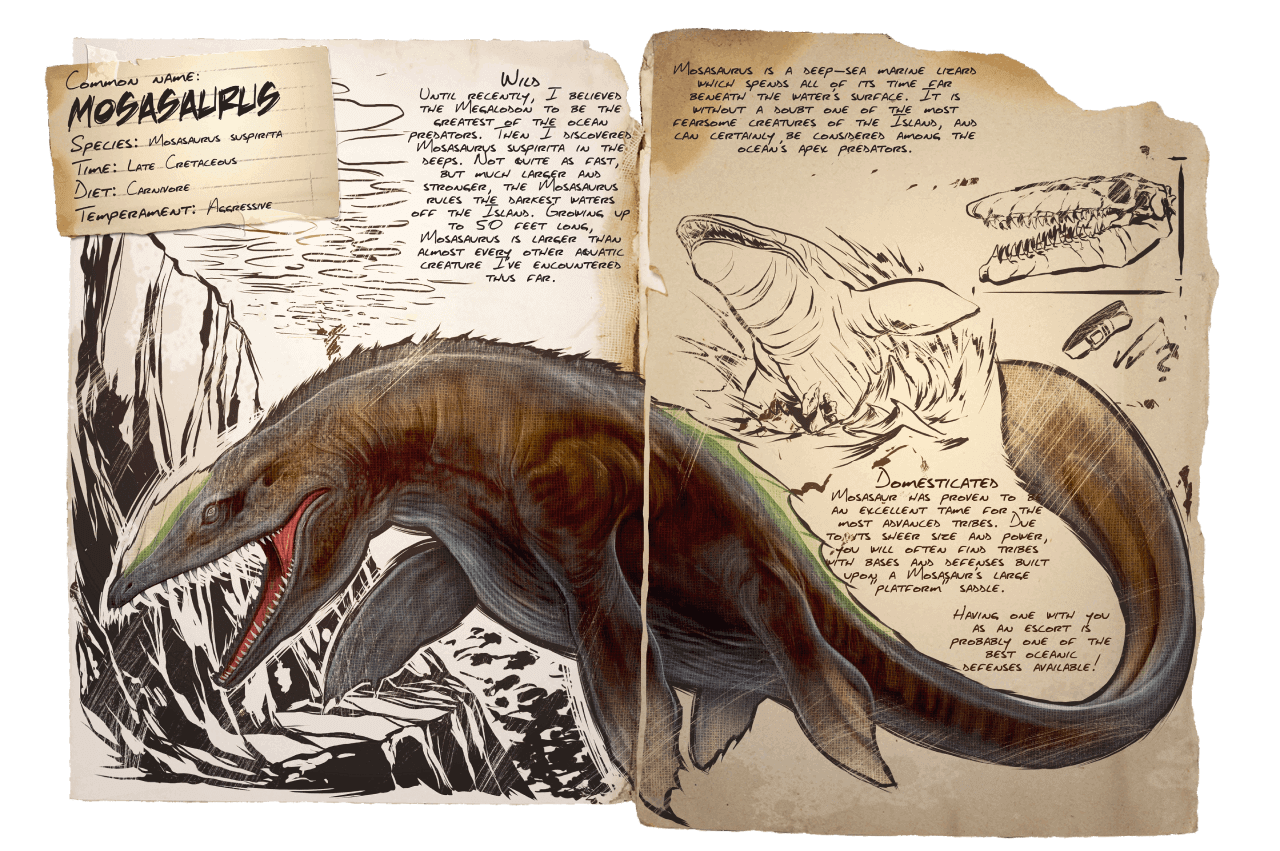
Mosasaurus: The Deep-Sea Giant
Venture into the darkest depths of ARK’s oceans, and you might just encounter the Mosasaurus, a true titan of the deep. This enormous marine lizard is not just a sight to behold but also one of the most powerful creatures you can tame in ARK. While taming a Mosasaurus is no easy feat, those who succeed will find themselves atop the ocean’s food chain. Its immense strength and size make it ideal for tackling even the most formidable underwater foes.
| Mosasaurus’ Strengths | Mosasaurus’ Weaknesses |
|---|---|
| Immense size and strength | Slow turning radius, making it vulnerable to agile attackers |
| Dominates the deep-sea food chain | Requires vast amounts of food to sustain |
| Can tackle even the most formidable underwater foes | Difficult to tame and requires significant resources |
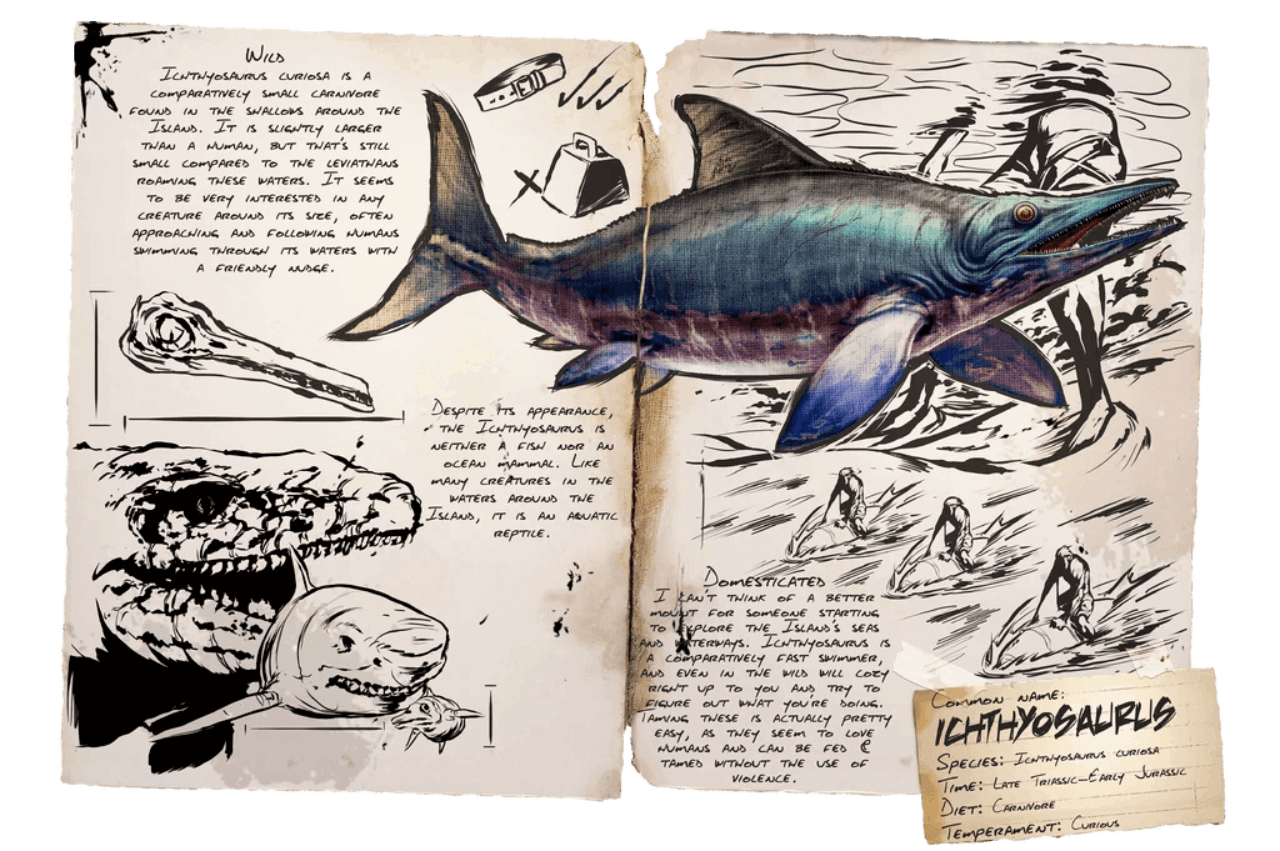
Ichthyosaurus: The Friendly Dolphin-like Dino
Not all of ARK water dinos are fearsome predators. The Ichthyosaurus, with its dolphin-like appearance and playful nature, is a favorite among many players. It’s one of the easiest aquatic creatures to tame, making it perfect for beginners looking to explore the oceans. What the Ichthyosaurus lacks in strength, it makes up for in speed and agility. It’s the perfect companion for players looking to scout the seas, find hidden treasures, or simply enjoy a leisurely swim.
| Ichthyosaurus’ Strengths | Ichthyosaurus’ Weaknesses |
|---|---|
| Fast and agile, perfect for scouting | Low health and easily targeted by predators |
| Easy to tame, even for beginners | Limited combat capabilities |
| Friendly nature often avoids unnecessary conflicts | Can be easily startled and may flee from threats |
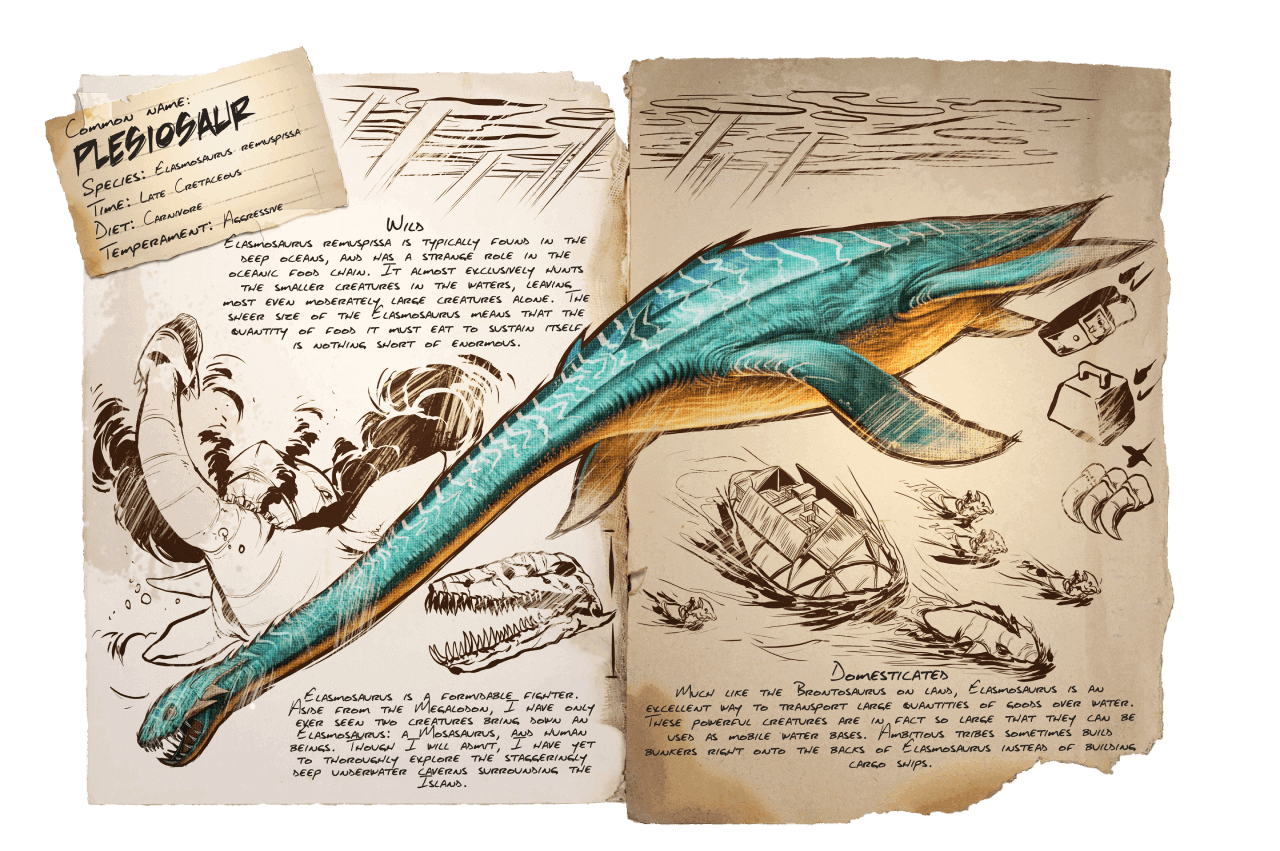
Plesiosaur: The Ancient Sea Monster
With its long neck and powerful flippers, the Plesiosaur is reminiscent of ancient sea legends. This prehistoric creature is not just a sight to behold but also a valuable asset for any tribe. Its ability to navigate both the surface and the depths with ease makes it a versatile mount. While it’s not as aggressive as the Megalodon or Mosasaurus, the Plesiosaur is no pushover. Its strength lies in its endurance, making it ideal for long underwater expeditions.
| Plesiosaur’s Strengths | Plesiosaur’s Weaknesses |
|---|---|
| Versatile mount for both surface and depth navigation | Vulnerable neck areas can be targeted by attackers |
| Good endurance for long expeditions | Can be overwhelmed by faster, more aggressive creatures |
| Possesses a dual-seat saddle for cooperative gameplay | Requires a strategic approach for taming due to its aggressive nature |
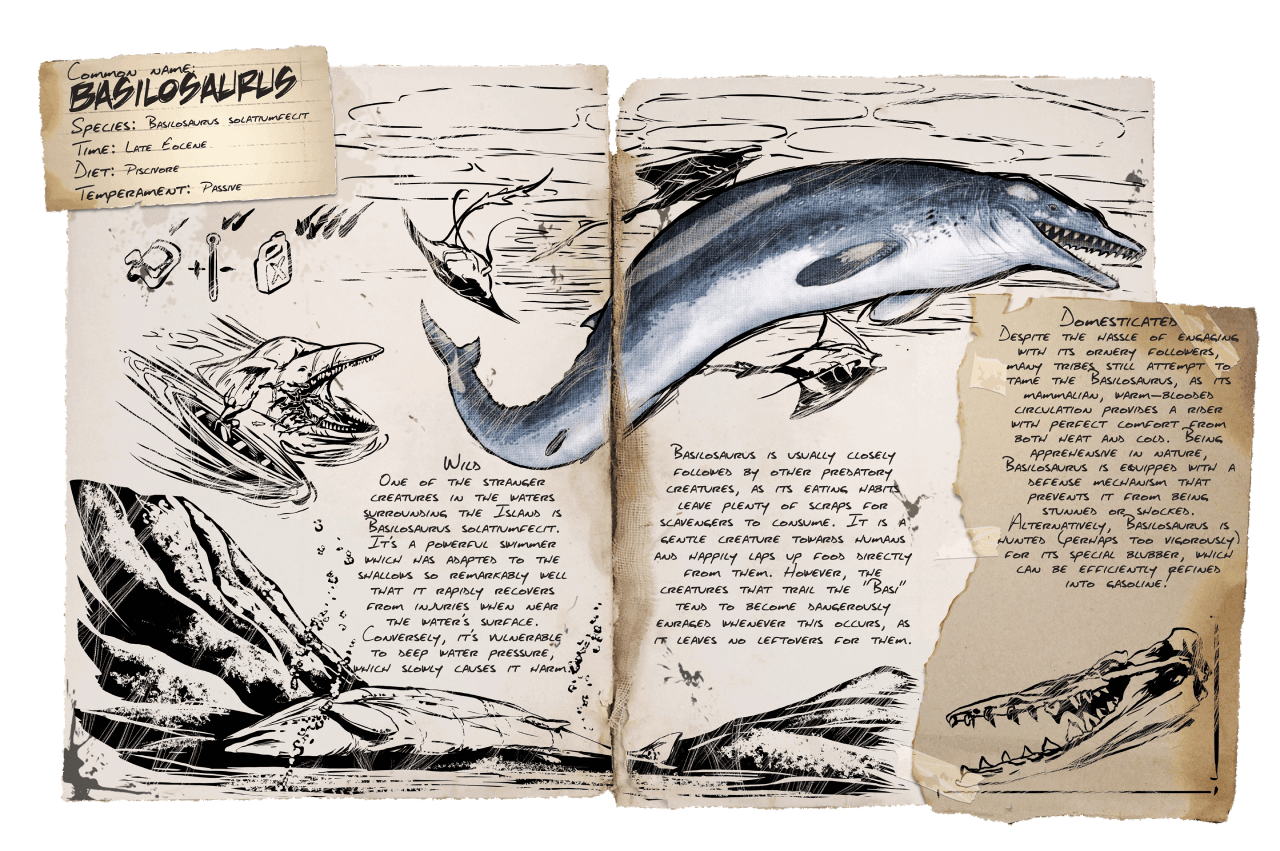
Basilosaurus: The Oil-Rich Sea Mammal
The Basilosaurus is a unique addition to ARK’s roster of water dinos. Unlike other marine creatures, the Basilosaurus produces oil, making it a valuable resource for tribes. Beyond its utility, the Basilosaurus is also a formidable creature in its own right. Its thick blubber protects it from the cold, allowing it to venture into the iciest waters without fear. Whether you’re after its resources or its strength, the Basilosaurus is a worthy addition to any aquatic team.
| Basilosaurus’ Strengths | Basilosaurus’ Weaknesses |
|---|---|
| Produces oil, a valuable resource | Slower swim speed compared to other marine creatures |
| Thick blubber protects from cold, allowing ventures into icy waters | Vulnerable to swarms of smaller predators |
| Resilient to jellyfish stings and eurypterid toxins | Surface dweller, making it an easy target for deep-sea predators |
Taming and Riding Water Dinosaurs: Mastering the Aquatic Realm
Taming water dinosaurs in ARK: Survival Evolved is a thrilling experience that requires preparation, patience, and strategy. Unlike their land counterparts, aquatic creatures present unique challenges due to the underwater environment.
- Preparation is Key
Before embarking on a taming expedition, ensure you’re equipped with the necessary tools and resources. This includes tranquilizer darts or arrows, narcotics to keep the creature sedated, and the preferred food for the specific dino you’re targeting. For instance, while the Megalodon prefers raw meat, the Basilosaurus has a fondness for Therizinosaurus kibble. - Approach with Caution
ARK Water dinos can be unpredictable. While some, like the Ichthyosaurus, are relatively docile, others, such as the Mosasaurus, can be fiercely aggressive. Always approach from a safe distance, preferably from the back or the sides, to avoid direct confrontation. - Utilize Bait
Some creatures can be lured into traps using bait. For instance, placing meat in a designated area can attract a Megalodon, allowing you to tranquilize it safely from a distance. - Monitor Oxygen Levels
While taming, always keep an eye on your oxygen levels. Running out of oxygen during a taming process can be fatal. Consider using oxygen-boosting gear or tamed creatures like the Ichthyosaurus to ensure you have a steady supply.
Taming Techniques
Taming is an essential skill in ARK, allowing players to domesticate wild creatures and make them allies. Each water dino has its unique taming method, and understanding these techniques can significantly increase your success rate.
| Dinosaur | Taming Method | Tips |
|---|---|---|
| Megalodon | Bait and trap method. Use tranquilizing arrows or darts to sedate. | Build a trap using behemoth gateways to corner the Megalodon. Once trapped, start the sedation process. |
| Mosasaurus | Deep-sea taming. Requires tranquilizing darts and a strong aquatic mount. | Lure the Mosasaurus to a safe location in the deep sea. Use a fast mount like the Plesiosaur to avoid its attacks while sedating. |
| Ichthyosaurus | Passive taming. Approach and feed it the preferred food. | Ichthyosaurs are friendly; no need to sedate. Just approach and feed them. Keep an eye out for predators during the taming process. |
| Plesiosaur | Bait and trap method. Use tranquilizing arrows or darts to sedate. | Lure the Plesiosaur into a trap made of giant gateways. Once trapped, begin the sedation process. |
| Basilosaurus | Passive taming. Approach and feed it the preferred food. | Basilosaurs are usually surrounded by aggressive Mantas. Clear the area of threats before starting the taming process. |
By mastering the taming techniques for each water dino, players can efficiently grow their aquatic army and dominate the oceans of ARK. Remember, preparation is key, and having the right tools and strategy can make all the difference.
Once you’ve successfully tamed a water dino, the real adventure begins. Riding these magnificent creatures offers a unique perspective of ARK’s underwater world.
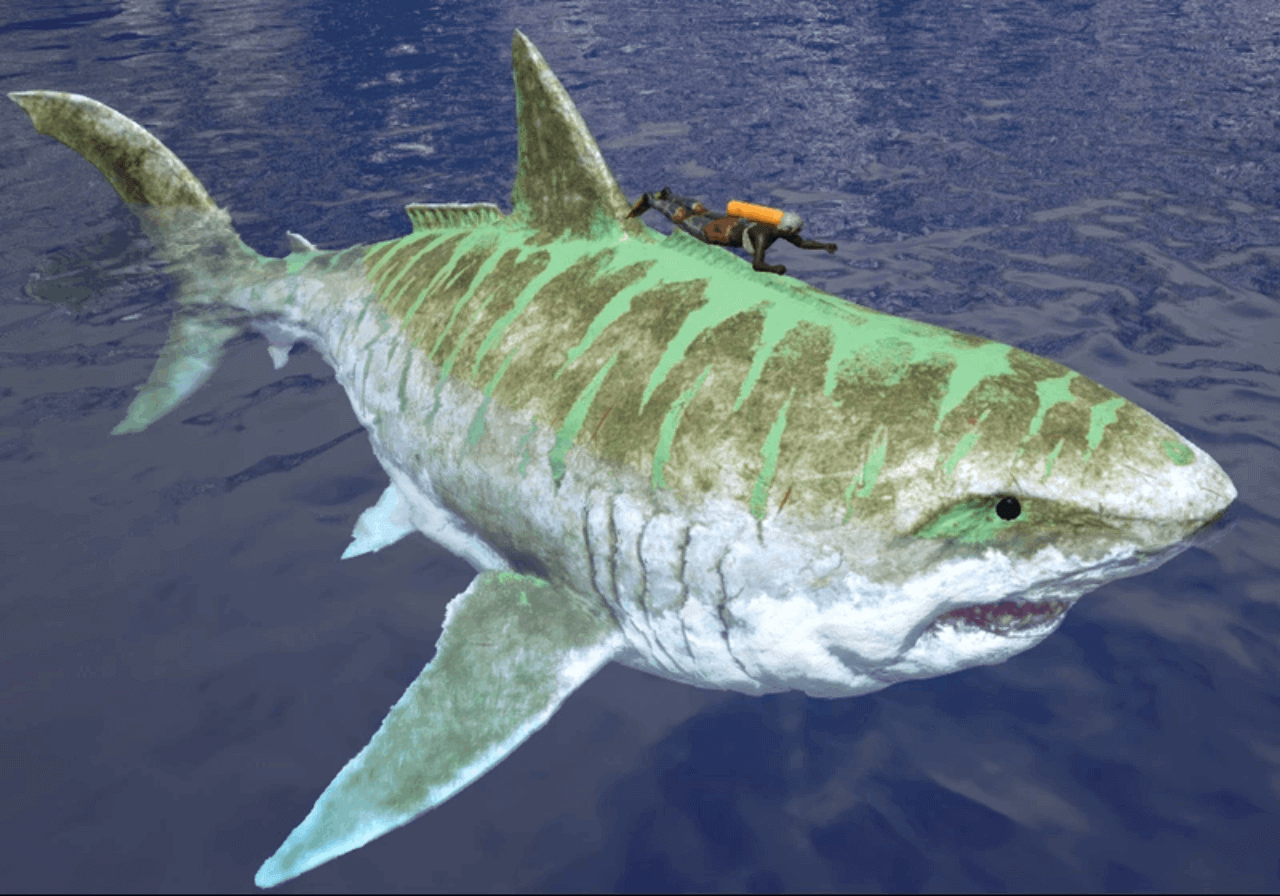
Each water dino has its unique abilities and limitations. While the Mosasaurus is unmatched in raw power, the Ichthyosaurus offers unparalleled speed. Familiarize yourself with your dino’s capabilities to make the most of your underwater expeditions.
The oceans of ARK are filled with hidden caves, sunken ships, and rare resources. With your tamed dino, you can access these treasures, unlocking new crafting recipes and valuable items.
The aquatic realm is not without its dangers. From hostile players to aggressive creatures, threats lurk around every corner. However, with a tamed water dino by your side, you’re well-equipped to defend yourself and claim dominance over the seas.
Surviving Underwater: Tips and Tricks for the Aspiring Aquanaut
The oceans of ARK are as beautiful as they are deadly. From oxygen deprivation to aggressive predators, numerous challenges await those brave enough to explore the depths.
Navigating the vast oceans of ARK is no walk in the park—or should we say, swim in the park? From treacherous underwater caves to the lurking dangers of the abyss, every dive is an adventure waiting to unfold.
- Invest in Quality Gear: Before venturing underwater, ensure you have the right gear. This includes scuba equipment, high-quality weapons, and tools. A scuba tank and mask are essential for extended underwater exploration, allowing you to breathe and see clearly.
- Stay Aware of Your Surroundings: The underwater environment can be disorienting. Always keep an eye on your depth, oxygen levels, and the direction you’re heading. Using landmarks, such as unique rock formations or coral reefs, can help you navigate and avoid getting lost.
- Avoid Deep-Sea Threats: The deeper you go, the more dangerous the oceans become. Creatures like the Mosasaurus and Plesiosaur patrol the depths, and venturing into their territory unprepared can be fatal. Always scout an area before diving deep and have an escape plan in place.
- Utilize Natural Resources: The oceans are rich in resources, from oil deposits to pearls. While exploring, gather these resources to boost your tribe’s capabilities. However, be cautious, as harvesting can attract unwanted attention from predators.
- Establish Underwater Bases: For those truly committed to mastering the aquatic realm, consider building underwater bases. These structures provide a safe haven, allowing you to store resources, breed ARK water dinos, and plan your next expedition.

Breeding and Raising Water Dinosaurs: Nurturing the Next Generation
Breeding in ARK is a meticulous process that begins with selecting two compatible creatures of opposite genders. Once paired, these creatures can mate, resulting in a fertilized egg or a gestating baby, depending on the species. While most water dinos lay eggs, some give live births. It’s essential to understand the reproductive method of your chosen dino to prepare adequately.
| Dinosaur | Breeding Method | Tips |
|---|---|---|
| Megalodon | Egg-layers. Ensure both are set to ‘Wandering’ in a confined space. | Given their aggressive nature, ensure the breeding area is secure from other predators. |
| Mosasaurus | Egg-layers. Requires a spacious breeding area due to size. | Stock up on meat and consider using preserving bins or refrigerators nearby. |
| Ichthyosaurus | Live births. Place a male and female close together in a safe area. | Due to their friendly nature, ensure the breeding area is secure from predators. |
| Plesiosaur | Egg-layers. Ensure ample space for movement during mating. | Keep away from potential threats like Megalodons during the process. |
| Basilosaurus | Live births. Monitor the female closely during gestation. | Produces oil, which can attract predators. Ensure a secure breeding area. |
Incubation and Gestation
For egg-laying species, incubation is the next step. The challenge is to maintain the right temperature for the egg. Players often use multiple air conditioners or campfires to achieve this. The egg will display a health bar, and if the temperature is incorrect, the health will decrease. For live-bearing species, the female will undergo a gestation period. During this time, it’s crucial to keep the mother well-fed and safe from threats.
| Dinosaur | Incubation/Gestation Method | Tips |
|---|---|---|
| Megalodon | Requires a specific temperature range for egg incubation. | Use air conditioners or campfires to regulate temperature. |
| Mosasaurus | Requires deep-sea conditions for egg incubation. | Set up a specific incubation area in deeper waters. |
| Ichthyosaurus | Gestation period where the female needs to be well-fed and safe. | Keep the female in a secure area away from threats. |
| Plesiosaur | Requires specific temperature ranges for egg incubation. | Monitor the egg’s health and adjust the temperature as needed. |
| Basilosaurus | Gestation period where the female needs to be well-fed. | Keep the female in a secure area, especially since they produce oil. |
Raising the Offspring
Once the baby dino is born, the real challenge begins. Baby dinos are vulnerable and require constant care. They rely on food from their inventory initially and transition to eating from troughs as they grow.
| Dinosaur | Raising Method | Tips |
|---|---|---|
| Megalodon | Baby Megalodons need a steady supply of meat. | Keep them in a secure area away from threats. |
| Mosasaurus | Massive appetite; requires a lot of meat. | Use preserving bins or refrigerators to store excess food. |
| Ichthyosaurus | Requires constant feeding and protection. | Due to their friendly nature, keep them in a secure area. |
| Plesiosaur | Requires a lot of food and protection. | Keep away from potential threats during the raising process. |
| Basilosaurus | Requires constant feeding and protection. | Given their oil production, ensure they are kept in a secure area. |
Genetic Optimization
Breeding offers the chance to combine the best stats of both parents, resulting in offspring with superior abilities. By selectively breeding dinos with desired traits, players can cultivate powerful lineages that dominate the aquatic realm.
| Dinosaur | Genetic Traits to Optimize | Tips |
|---|---|---|
| Megalodon | Speed, Stamina, Attack Power | Breed with high-level Megalodons to increase the chances of superior offspring. |
| Mosasaurus | Health, Stamina, Melee Damage | Focus on breeding Mosasaurs with high health for better survivability in deep waters. |
| Ichthyosaurus | Speed, Stamina | Given their non-aggressive nature, prioritize speed and stamina for quick escapes. |
| Plesiosaur | Health, Attack Power, Stamina | Their long necks can be an advantage in combat; focus on enhancing their attack power. |
| Basilosaurus | Health, Oil Production, Stamina | Their unique oil production can be optimized further through selective breeding. |
The Joys and Challenges of Parenthood
Raising a water dino is a time-consuming endeavor, filled with challenges. From ensuring the right temperature for incubation to protecting the young from predators, players must be vigilant. However, the rewards are well worth the effort.
| Dinosaur | Challenges | Rewards |
|---|---|---|
| Megalodon | Aggressive nature requires constant monitoring. | A powerful and fast aquatic predator for hunting and exploration. |
| Mosasaurus | Their massive size means they need ample space and food. | Dominance in deep-sea exploration and combat. |
| Ichthyosaurus | Vulnerable to predators due to their friendly nature. | Quick and agile, excellent for scouting and gathering resources. |
| Plesiosaur | Requires a secure area away from threats like Megalodons. | A formidable presence in underwater combat. |
| Basilosaurus | Attracts predators due to oil production. | Provides a steady supply of oil, a valuable resource. |
By understanding the intricacies of breeding, incubation, gestation, and raising, players can ensure the successful growth and development of their water dinos in ARK.

The Role of ARK Water Dinos in PvP and PvE
In the dynamic world of ARK: Survival Evolved, understanding the strengths and applications of your tamed creatures is crucial. Water dinos, with their unique abilities and attributes, play a pivotal role in both PvP and PvE settings.
Tactical Advantages in PvP
- Surprise Attacks: The oceans and waterways provide a stealthy approach route to enemy bases. A tribe with a formidable aquatic force can launch surprise attacks, catching adversaries off-guard.
- Resource Control: Many valuable resources are found underwater. By dominating the aquatic realm with powerful dinos, tribes can control these resource points, giving them an edge in crafting and trade.
- Defensive Strategies: Water dinos, especially the larger ones like the Mosasaurus, can be used to patrol and defend coastal bases, deterring enemy players from approaching.
Exploration and Survival in PvE
- Resource Gathering: Creatures like the Anglerfish, with its illuminating lure, can venture into the darkest ocean depths to harvest rare resources.
- Cave Exploration: Some of ARK’s underwater caves are teeming with challenges and treasures. Having a well-tamed aquatic team can make these explorations more feasible and rewarding.
- Protection from Threats: The oceans are home to some of ARK’s most formidable creatures. Tamed ARK water dinos can fend off these threats, ensuring the player’s safety during underwater expeditions.

In both PvP and PvE scenarios, a well-rounded team of aquatic creatures can significantly enhance a player’s experience, strategy, and success rate. Whether you’re planning a raid on an enemy tribe or simply exploring the mysteries of the deep, never underestimate the power of the ocean’s mightiest inhabitants.
Water Dinos vs. Land Dinos
Water and land dinos are like apples and oranges—both delicious but in different ways. Let’s compare:
- Key Differences: While land dinos excel in speed and agility on terrain, ARK water dinos have the advantage in the aquatic realm with their swimming prowess. And while a T-Rex might be the king on land, it wouldn’t stand a chance against a Mosa in the deep blue.
- Benefits of a Balanced Team: Having a mix of both land and water dinos can be a game-changer. Whether you’re hunting for resources, battling other tribes, or just exploring the vast world of ARK, a diverse team will always have your back. Plus, who wouldn’t want a Megalodon and a T-Rex as their personal bodyguards?
Community Insights: Player Experiences with ARK Water Dinos
The ARK community is vast and filled with seasoned players who’ve had their fair share of underwater escapades. Here’s what some of them have to say:
- General Insights: Many players emphasize the thrill of the first deep dive, the uncertainty of what lies below, and the satisfaction of successfully taming a powerful aquatic creature. The oceans of ARK are a testament to the game’s depth (pun intended) and the diverse challenges it offers.
- Tips and Tricks: A common piece of advice from experienced players is to always be prepared. Whether it’s having a backup escape plan, stashing extra resources on your aquatic dino, or scouting areas before a deep dive, preparation can be the difference between success and an unexpected trip to the respawn screen.
- Adapting to the Environment: Many players recount the initial challenges of adapting to ARK’s aquatic environment. Unlike the land, where you can easily spot threats and resources, the ocean’s vastness and depth can be disorienting. Over time, however, they’ve learned to read the signs of the sea, from the movement of smaller fish signaling a larger predator nearby to recognizing the subtle glow of precious underwater resources.
- The Joy of Discovery: One of the most echoed sentiments in the community is the joy of discovering something new underwater. Whether it’s a hidden cave filled with rare treasures, stumbling upon a serene underwater vista, or encountering a new aquatic creature for the first time, the oceans of ARK continuously offer moments of wonder and surprise.

Conclusion and Future Updates
As we wrap up our deep dive into the world of ARK’s aquatic life, it’s clear that the oceans hold endless possibilities for adventure, challenges, and discovery. Whether you’re a solo player or part of a massive tribe, the waters of ARK offer something for everyone.
The developers of ARK are always looking for ways to enhance the gaming experience. Rumor has it that new aquatic biomes and creatures are on the horizon. So, keep your scuba gear ready!
Your feedback and experiences shape the world of ARK. Whether you’ve discovered a new taming technique or found a hidden underwater cave, share your stories and experiences with ARK water dinos and help the community grow.
